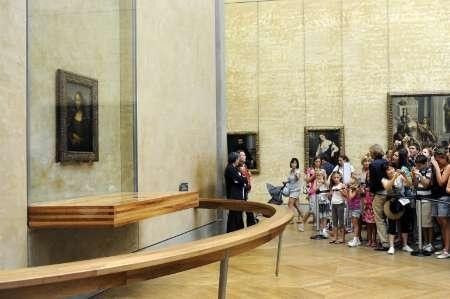Historian Claims Leonardo Da Vinci's Mona Lisa Was A Chinese Slave

A new theory has recently come into light, which claims that the woman in Leonardo da Vinci's famous portrait called 'Mona Lisa' might be a Chinese slave and also the artist's mother. The theory is proposed by the Hong Kong-based Italian historian and novelist Angelo Paratico. His comments on the famous painting have triggered an online debate about the identity of the famous 15th century artist, mathematician and inventor.
The historian has spent the last two years piecing documents together to solve the mystery surrounding the identity of the woman seen in the famous portrait. Paratico is currently working on a non-fiction book titled, 'Leonardo Da Vinci: A Chinese Scholar Lost In Renaissance Italy', which is supposed to hit the racks next year. The historian is claiming that he is certain that Leonardo's mother was from the Orient, as told by the South China Morning Post.
As per the latest theory proposed by the historian, Da Vinci's father had a Chinese woman as a slave. Her name was reportedly Caterina. Around 1452, which was about the same time the artist was born, information regarding Caterina suddenly disappeared from official documents. As per Paratico, she was secretly taken to Vinci, about 20 miles from Florence, where she gave birth to one of the world's most celebrated artist--Leonardo Da Vinci.
The theory hints that there was a relationship between Da Vinci's father and his Chinese slave, which consequently led to the birth of the renowned artist. Paratico argues that this claim had already been made a hundred years ago by Sigmund Freud, who asserted that the iconic painting was inspired by da Vinci's mother.
Paratico further tried to prove his point by shedding light on some other aspects of the artist's life. For instance, he found that da Vinci was left-handed and a vegetarian. Both characteristics were uncommon at that time in Europe, but fairly normal among the Chinese. The historian also claims that Italy was full of oriental slaves during the Renaissance period.
He even claims that the painting's background depicts a Chinese landscape, as well as pointed out that the Mona Lisa's face has a bit Chinese features. The theory fuelled online and offline debates around the subject of the painting and the origin of the artist. Francisco Vizeu Pinheiro, an architect and assistant professor at the University of St. Joseph, however, is unconvinced. He feels that "there's no concrete evidence" to prove the claim and Paratico is "jumping quickly to conclusions".




















